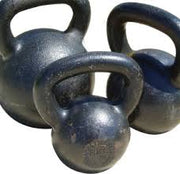One of the most common complaints among adults is pain between the shoulder blades. Many factors can contribute to this discomfort, from poor posture and stress to more serious underlying conditions. The exact location of the pain may vary, but it typically occurs around the upper back area near the spine.
In this article, we will explore the various causes of pain between the shoulder blades and ways to alleviate it. We will also discuss when medical attention may be necessary and what can be done to prevent this type of pain in the future.
Causes of Shoulder Blade Pain
There are several potential causes for pain between the shoulder blades. Some common factors include poor posture, overexertion of the muscles, and stress or tension. Other possible causes include injuries or medical conditions such as arthritis, fibromyalgia, and gallbladder disease.
Poor Posture
Poor posture is one of the leading causes of pain between the shoulder blades. Many people spend long hours sitting at desks or hunched over electronic devices, putting strain on their back and neck muscles. This can lead to a variety of problems, including muscle tension, joint misalignment, and nerve irritation.
To improve posture and prevent pain between the shoulder blades, it is important to maintain proper alignment of the spine and shoulders. This can be achieved through regular exercise and stretches, as well as making ergonomic adjustments in the workplace.
Overexertion of Muscles
Another common cause of pain between the shoulder blades is overexertion of the muscles. This can occur from physical activities such as lifting heavy objects or participating in sports, as well as from repetitive tasks like gardening or cleaning.
When muscles are overworked, they can become fatigued and strained, resulting in pain and discomfort. To prevent this type of pain, it is important to warm up before physical activity properly and to take breaks when performing repetitive tasks. Strengthening the muscles through exercises can also help prevent strain and injury.
Stress and Tension
Stress and tension can also contribute to pain between the shoulder blades. When we are stressed, our muscles tend to tense up, which can lead to stiffness and discomfort in the upper back area. Additionally, stress can cause us to adopt poor posture habits, further exacerbating any existing pain.
To alleviate stress and tension, it is important to find healthy ways to cope, such as exercise, meditation, or therapy. Learning relaxation techniques and incorporating them into daily routines can also help reduce muscle tension and prevent pain between the shoulder blades.
Injuries or Medical Conditions
In some cases, pain between the shoulder blades may be a symptom of an underlying injury or medical condition. This can include things like a rotator cuff tear, herniated disc, or spinal stenosis. It may also be related to conditions such as arthritis, fibromyalgia, or gallbladder disease.
If the pain is persistent and does not improve with rest and home remedies, it is important to seek medical attention. A doctor can perform a physical exam and run any necessary tests to determine the cause of the pain and provide appropriate treatment.
Alleviating Shoulder Blade Pain
- Improving Posture: One of the most effective ways to alleviate pain between the shoulder blades is to improve posture. This can be achieved through simple exercises and stretches that help strengthen the muscles in the back and improve spinal alignment.
- Applying Heat or Ice: Applying heat or ice to the affected area can help reduce inflammation and relieve pain. Generally, heat is more effective for muscle tension and stiffness, while ice is better for acute injuries.
- Taking Over-the-counter Medications: Over-the-counter pain relievers such as ibuprofen or acetaminophen can help alleviate discomfort caused by muscle tension or inflammation.
- Trying Massage or Chiropractic Care: Massage therapy and chiropractic adjustments can also provide relief for pain between the shoulder blades, as they help relax tense muscles and improve spinal alignment.
- Engaging in Relaxation Techniques: As stress and tension can contribute to pain between the shoulder blades, incorporating relaxation techniques such as meditation or deep breathing can help alleviate discomfort.
Prevention Tips
- Exercise Regularly: Regular exercise can help strengthen the muscles in the back and improve overall posture, reducing the risk of pain between the shoulder blades.
- Take Breaks from Repetitive Tasks: If your job or daily activities involve repetitive tasks, make sure to take breaks to prevent overexertion of the muscles.
- Stay Hydrated: Drinking enough water can help keep the muscles hydrated and prevent stiffness.
- Incorporate Ergonomic Adjustments: Making ergonomic adjustments in your workplace, such as using an ergonomic chair or standing desk, can help improve posture and reduce strain on the back muscles.
- Practice Stress Management: Finding healthy ways to cope with stress can prevent tension from building up in the muscles and causing pain. This can include activities like exercise, meditation, or therapy.
When to Seek Medical Attention
In most cases, pain between the shoulder blades can be managed with self-care and at-home remedies. However, if the pain is severe, persistent, or accompanied by other symptoms such as numbness or weakness in the arms, it is important to seek medical attention.
Additionally, if the pain is impacting daily activities or does not improve with self-care measures after a few weeks, it is advisable to consult a doctor. They can help diagnose any underlying conditions and provide appropriate treatment to alleviate the pain.
Additionally, proper diagnosis and treatment can help prevent further complications or long-term effects of the underlying issue. It is important to listen to your body and seek medical attention when necessary to ensure optimal health and well-being.
Does Age Play a Role in Shoulder Blade Pain?
While anyone can experience pain between the shoulder blades, it is more common among adults and older individuals. As we age, our muscles tend to weaken and become less flexible, making them more susceptible to strain and injury.
Older adults need to incorporate gentle stretching and strengthening exercises into their daily routines to help prevent pain between the shoulder blades. Seeking medical attention for any persistent or severe pain is also crucial in order to maintain physical function and mobility as we age.
Plus, taking care of our bodies through proper nutrition and regular exercise can help prevent age-related issues that may contribute to shoulder blade chronic pain. It is never too late to start prioritizing your health and well-being!
Should You Be Concerned About Pain Between the Shoulder Blades?
Pain between the shoulder blades can be uncomfortable and disruptive to daily activities, but in most cases, it is not a cause for concern. With proper self-care and medical attention when necessary, the pain can typically be managed and potentially prevented.
It's important to pay attention to any changes or patterns in your back pain and to seek medical attention if the pain becomes severe or persistent. By taking care of your body, practicing good posture, and managing stress levels, you can help prevent and alleviate pain between the shoulder joint blades for a healthier, pain-free life.
Also, remember to consult your doctor before starting any new exercise routine or self-care measures, especially if you have pre-existing medical conditions. With the right approach, you can effectively manage and prevent pain between the shoulder blades for a better quality of life.
Is whey protein good for pain between the shoulder blades?
There is no scientific evidence to suggest that whey protein specifically helps with pain between the shoulder blades. However, adequate protein intake is important for overall muscle health and proper healing of injuries.
If you are experiencing pain between your shoulder blades, it is best to consult a doctor for proper diagnosis and treatment recommendations. They may also be able to provide guidance on incorporating protein into your diet in a safe and effective way. Additionally, incorporating regular strength training exercises can also help improve muscle health and prevent pain between the shoulder blades.
As with any supplement or exercise routine, it is important to consult with a healthcare professional before making any changes to your diet or physical activity level. They can help ensure that you are taking the necessary steps for optimal health and well-being.
FAQs
What could be causing upper back pain or pain between my shoulder blades?
Pain between the shoulder blades, also known as interscapular pain, can be caused by various issues such as muscle strain, problems with the thoracic spine, or referred pain from other areas like the abdomen or chest.
Can shoulder pain be related to pain between my shoulder blades?
Yes, issues with the shoulder muscles or joints can result in pain in the upper back or between the shoulder blades. This is often due to referred pain, where discomfort is felt in a different location than where the issue is actually occurring.
How can physical therapy help with pain between my shoulder blades?
A physical therapist can provide targeted exercises and treatments to help relieve pain between your shoulder blades. These treatments may focus on improving posture, strengthening muscles, and increasing flexibility in the cervical or thoracic spine.
When should I seek immediate medical attention for pain between my shoulder blades?
If your pain is severe, persistent, or accompanied by other symptoms such as chest pain or abdominal pain, you should seek immediate medical attention. These could be signs of a more serious condition that needs urgent care.
Conclusion
Pain between the shoulder blades can be caused by a variety of factors, including muscle tension, poor posture, and underlying medical conditions. However, with self-care measures such as exercise and stress management techniques, as well as seeking medical attention when necessary, this pain can be effectively managed.
It is important to listen to your body and make lifestyle adjustments to prevent pain between the shoulder blades, especially as we age. Remember to consult a doctor for proper diagnosis and treatment recommendations, and prioritize your physical and mental well-being through healthy habits.
By taking care of our bodies and addressing any issues that may arise, we can enjoy a pain-free life and maintain optimal health for years to come. So stay active, drink plenty of water, practice good posture, and address any stressors in your life to help prevent pain between the shoulder blades. Your body will thank you!
















































































































